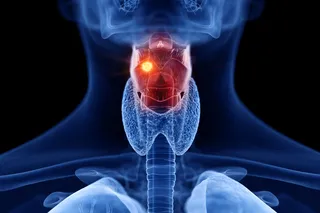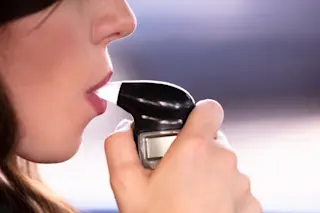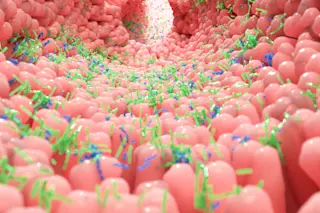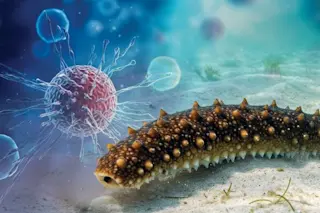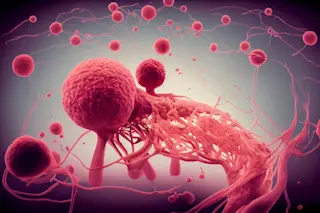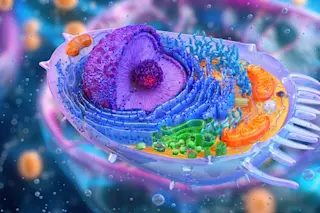Forget "roll over" or "shake." Researchers in Britain have shown Fido capable of a more significant trick: sniffing out cancer.
One of thegreatest challenges in treating cancer is detecting it early while there is still time to contain the growth and spread of malignant cells. By the time a patient feels serious symptoms, however, it is often too late. Routine X-rays are expensive, produce lots of false alarms, and create their own health risk. But even before you can feel cancer or see it, you might be able to smell it, says Carolyn Willis of Amersham Hospital in Buckinghamshire, England.
For years, some researchers have claimed that tumors produce organic compounds whose odors can be picked up by the highly attuned senses of dogs. In 1989 a report in the journal The Lancet described a woman whose dog wouldn’t stop sniffing her mole. The pooch’s persistence eventually compelled her to see a doctor, who diagnosed the mole as a malignant melanoma. The dog was most likely drawn to the volatile, smelly chemicals that laboratory studies show can waft off of cancer cells.
Willis and her colleagues have now produced the first rigorous scientific support for the phenomenon. They recently put six dogs through a seven-month training program, teaching the animals to discriminate between urine samples from bladder-cancer patients and urine from healthy donors or from people with mild, noncancerous bladder conditions. After sniffing a sample, the dogs were taught to lie down beside it if the urine was cancerous. For their final exam, the canines were offered a choice of seven urine samples, only one of which came from a cancer patient. By chance alone, the dogs should have scored only 14 percent on this test. Instead, they correctly identified cancerous urine 41 percent of the time. (Strangely, one urine sample kept tripping the dogs up. All the dogs repeatedly pegged the pee as cancerous although it belonged to a supposedly healthy volunteer—who was later diagnosed with carcinoma of the right kidney.)
Willis says that her study, published in the September 25 issue of the British Medical Journal, provides convincing evidence that dogs have the ability to sniff out human cancer. Once chemists can identify which compounds the dogs were smelling, Willis says, “this will hopefully lead to the development of an instrumental method for detecting this form of cancer.”
Dogs may not be the only animals to prove adept at the cancer-sensing game. Rats, which also have powerful noses and are easy to train (they’re used to detect bombs and landmines), could be useful diagnosticians as well, Willis argues. Several research groups have begun training rats for a different kind of disease diagnosis, detecting tuberculosis from breath samples; the presence of TB in the lungs appears to be associated with a particular fragrance. Other scientists are exploring whether electronic chemical detectors, or mechanical noses, can do the same things the animals do. For example, recent studies have analyzed the breath chemistry of breast and lung cancer sufferers to search for chemical signatures that these devices could identify.
Dogs, however, still look like the most promising cancer-sniffing weapon. Prompted by The Lancet article, James Walker, director of the Sensory Research Institute at Florida State University in Tallahassee, confirmed that dogs can smell skin melanomas on volunteers wearing both empty bandages and those with skin cancer cells inside. Walker is now testing the canine sense of smell on urine from patients with prostate cancer or bladder cancer. His dog-training regimen is different from the one followed by Willis, who, he says, may have underestimated dogs’ sniffing prowess. With the right training, Walker suspects, dogs might become nearly 100 percent accurate at identifying which people have cancer.
Walker says his work with dogs may be viewed by outsiders as crackpot or junk science, but he counters that the potential of using our furry friends in a clinical setting makes too much sense to ignore. Even human doctors can pick up the particular odor associated with some diseases such as strep throat—and dogs’ noses are 10,000 to 100,000 times more sensitive than ours. And unlike electronic detectors, “you don’t have to plug them in and they self-calibrate,” he says.
If researchers can show that dogs are reliable at diagnosing cancer, trained animals could become a routine part of a medical checkup. “It doesn’t hurt anybody to pee in a cup, and it doesn’t hurt anyone to have a dog sniff it. It’s quite likely there will be diseases where the smartest thing we can do is use dogs,” Walker says.



